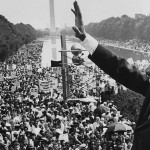On 1 St September 1939 the Germany invaded Poland, World War II broke out. At 04:45 five strong Wehrmacht armed 1 250 000 men, 2 650 tanks and 2 085 Luftwaffe aircraft, invaded Poland with a pincer attack. The tactic employed is the one called Blitzkrieg, the Blitzkrieg. The 2 September, the United Kingdom and France sent an ultimatum to Germany that remained unheeded. The 3 September, respectively at 11:45 and at 17:00, the declared war. The Polish Army had a million men and was equipped with several hundred armored cars and tanks of light or old models, with the support of six hundred aircraft of low quality. The poles though animated by tenacity could not argue with an adequate military organization. The Hetmans by setting the armed struggle as trench warfare, failed to stop l’ advance of German tanks which penetrated the rear acted with perfect outflanking maneuvers. The perfect combination synchronized mechanized infantry, Aviation, artillery and armored vehicles make a breakthrough in the enemy lines using the combination tanks-artillery-aviation. Once made the breakthrough, the wagons would be taken in the direction of logistics centers, aiming to cut their supply lines and encircle the enemy. The mechanized infantry, in the wake of armored columns, He escorted the sides and rear armoured tip. Also to enhance’ effectiveness of their action the Junkers JU87 B-1 were told Stuka, Dive Bomber, to replace the artillery and allow attacks of a certain magnitude also very behind enemy lines. The campaign started on September 1, ended the 6 October with the surrender of the last Polish forces. The term Blitzkrieg appears to have been coined by a correspondent of Time during the invasion of Poland, but according to some sources it was a term already in use in years 30. A definition perhaps more relevant is the one given by German strategy or manuals Bewegungskrieg, war of movement.
Hector Parker




